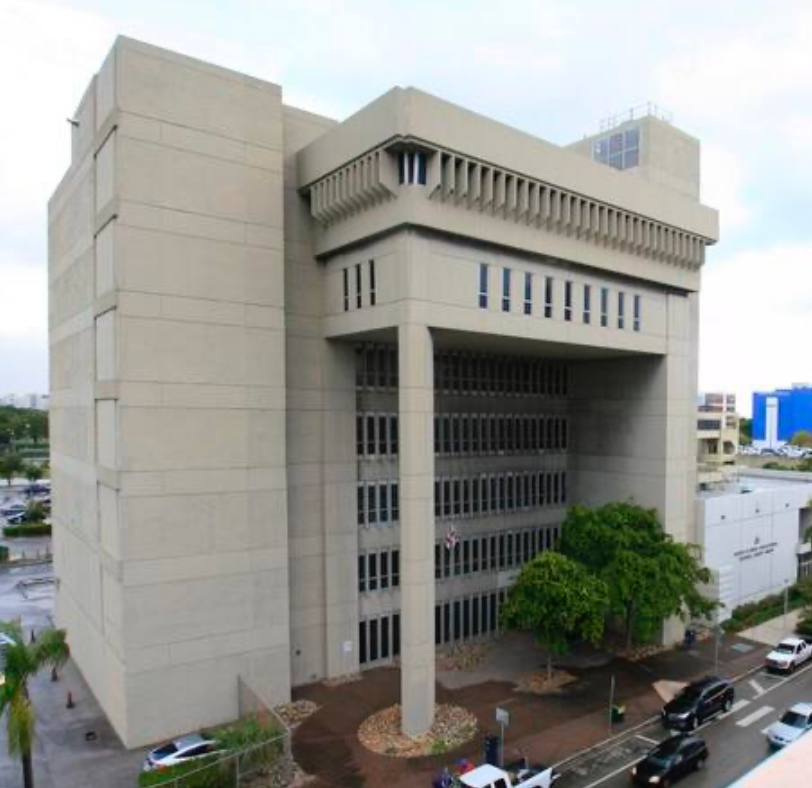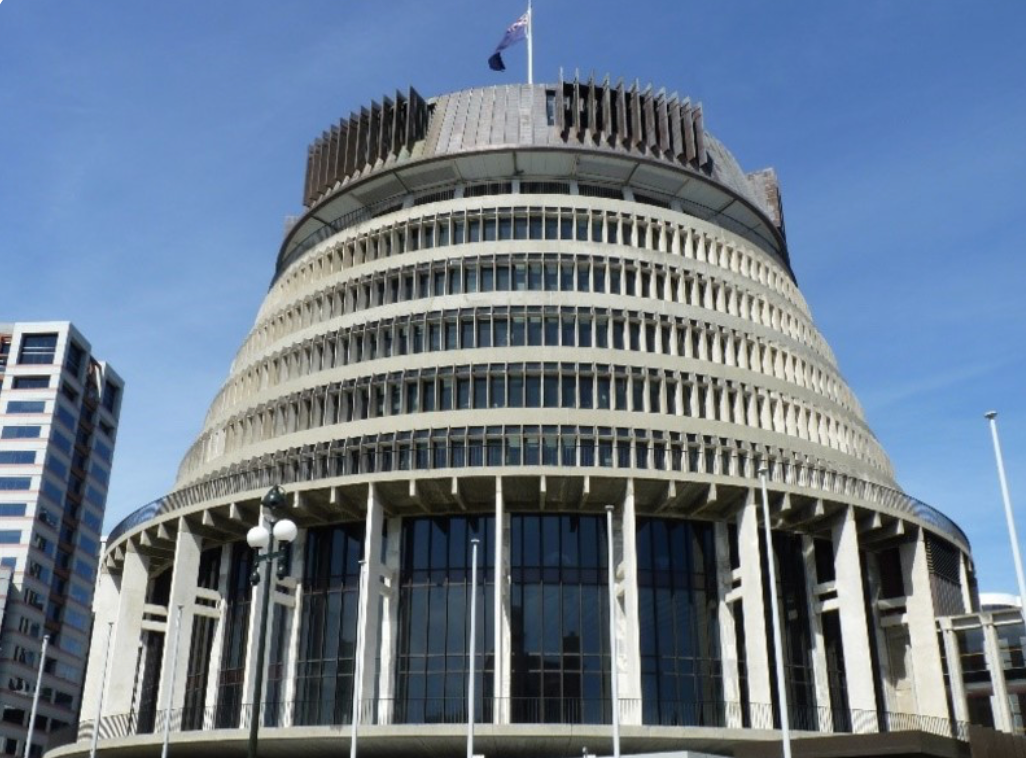Independent Review of Legal Services Regulation
Crispin Passmore • July 24, 2020
Mayson too generous to Law Society which undermines proposals

This is more an essay than a blog. It is the long version of a short blog first posted in The Times (paywall) on 23 July, 2020.
- Allow innovation and competition to thrive across the legal market.
- Ensure only proportionate and targeted regulation.
- Remove all vested interests from regulatory decision making.
- Focus on the most serious harm, which is currently lack of access and high pricing; driven at least in part by lack of investment and technology.
- Balance consumer protection with increasing access, especially for poorer people and small businesses.
My approach to regulation and reform is heavily influence by Dr Chris Decker
and Professor George Yarrow, and in particular a report
commissioned soon after the Legal Services Board was established (Understanding the economic rationale for regulating legal services). It taught me that attempts to approach reform from a blank sheet of paper, thinking what you would design with a free hand, is futile. We do not have a blank sheet; we start where we are and operate within a set of constraints and realities. Second, regulation is not simply about regulators and the formal rules they write. The institutional approach looks at the ‘rules of the game’ and this includes the context that sector specific regulators operate within. Legal services regulators operate within consumer and competition law, political narratives, social relationships, and institutional dynamics. All of these ‘regulate’ the conduct of those that operate within the legal market.
It is no good saying that they are not the subject of the report because they are not formal regulation: if they hinder better economic outcomes for consumers or damage the proper administration of justice and support for the rule of law, we need to tackle them. Theory is for the classroom; regulation is for the real world. That is how I approach reform and it provides a short-hand test: will proposals make things better for citizens and businesses?
The short answer is that with 50 recommendations Mayson has mapped a way forward that is easy to support. The current regulatory system has not yet delivered the scale of growth in the delivery of legal services that our economy and society need if people and businesses are to thrive. A more dynamic and innovative legal market that reaches into what are currently under-served parts of the population, businesses and issues could help make legal rights a reality. There has been real progress in tackling these issues and we do have a thriving legal market beyond traditional partnerships at the same time as having developed and attracted most of the world’s leading law firms. Reforms that have flowed from the Legal Services Act 2007 are the envy of legal regulators around the world and are now being replicated in many jurisdictions, including the once untouchable US.
There is however more to do and that is now accepted by all beyond the most luddite incumbents and trade associations. But I do not think that there is a single answer – there is no one reform that will liberalise the market and introduce the sort of dynamism that we all wish to see. It is more a case of a relentless assessment of how the market is working and removing or refining ‘rules’ that inhibit dynamism and growth.
My main criticism of the final report is that it strives too generously to find a way to keep the Law Society on side. By allowing the Law Society to set entry requirements for Solicitors (albeit that they would have to be approved by the new Legal Services Regulatory Authority (LSRA) as meeting its standards) it has the effect of giving them a role in regulating, along with other professional bodies, and of setting the authorisation requirement for litigation and advocacy, subject to that approval.
We can expect each of those professional bodies to make the case to the public that their route is best, that it guarantees the right quality and more. The public will continue to use behavioural short cuts
to make choices and many will rely on the solicitor title - a title that will be over-engineered for legal advice other than litigation and higher court advocacy yet remain dominant. It is a recipe for more gold plating from professions that prices most out of the market. The Law Society (and Bar Council) will make that case with a state created and now newly sanctioned monopoly. It will ensure the market is at its most profitable for solicitors rather than as large as it can be to the benefit of the public.
Professor Mayson does include several recommendations that seek to limit or control the Law Society’s powers but I am sceptical they would be effective. I suspect the judiciary will echo and reinforce the hierarchy of the legal professions rather than act as a check on them. Indeed, if the constraints are effective, then they are not much of a carrot to get the Law Society (and Bar Council) onside.
The powers given back to the Law Society are significant. Will this improve the economic welfare of citizens and support justice? How might the Law Society use the power that Mayson grants; and will the LSRA be able to effectively constrain any bad behaviour?
The Law Society had similar authority for over a century and created the legal market that we are all so dissatisfied with. They introduced barriers to entry at the qualification stage that are designed to limit supply and put in place economic rules that constrain innovation and competition. We know this because the rules that were in place when the SRA was created were largely evolved from the 1960 Code of Conduct which was open in its desire to avoid competition among solicitors.
Mayson gives the example that the Bar Council (given similar powers) might set higher standards covering referral fees and the CAB rank rule. I am not sure how either of these are higher standards – they are restrictive practices that limit supply, innovation and competition. The Law Society would do what it and other self-regulatory bodies have always done – confuse their own interests as the public interest, impose economic restrictions dressed up as ethical rules, and act in the interests of solicitors and itself.
Decker and Yarrow considered that:
“well-recognised problems can arise when the remit of self-regulation moves beyond what is necessary to certify quality. In the limit, these can lead to some of the familiar adverse consequences associated with monopolisation and cartelisation.”
Over recent decades, Parliament has allowed alternative legal professions to emerge that might compete against solicitors and undermine their monopoly. We have seen the emergence of Licensed Conveyancers, Legal Executives, Trademark and Patent Attorneys, Costs Lawyers, Immigration Advisers, and Claims Management Companies, yet solicitors still dominate the market. These limited licence practitioners have improved the flexibility of the legal labour market but have made almost no dent in the solicitor monopoly.
Just like the privatised businesses such as British Telecom, British Gas and British Airways, the Law Society and Solicitors owe much of their market dominance to the state sanctioned monopoly that they benefited from for decades. They had years to build brand awareness and customer stickiness. And competitors have found it hard to break through the professional monopoly – just as happened in telecoms, gas and electricity, and airlines. It has only been through robust competition policy that these monopolies have been tackled for the benefit of the consumer. Regulators have been willing to regulate the incumbent monopolies differently to new entrants – that is something that I will come back to.
I am characterising for effect, but I read the Mayson proposals as effectively abolishing the SRA and sharing its powers and responsibilities between the Law Society and a beefed-up Legal Services Board – the new LSRA. His argument is that the LSRA would be able to refuse proposed rules that are not consistent with the single public interest regulatory obligation. There is also an obligation to only put in place the minimum necessary regulation, but I am not sure this is any more useful (or binding) than the existing better regulation principles. I don’t think that any self-regulatory body has ever proposed rules that they cannot articulate, however tortuously, as in the public interest. I doubt the power of the LSRA to be ever vigilant to stop misuse of the power given to the Law Society. The LSB has had similar powers and found them very hard to use. The front-line regulator always has more information, has consulted widely and is given the authority to make reasonable judgements. I have been on both sides of that process, having been responsible for its original design and having taken major reforms through the process. It is expensive, bureaucratic and the worst example of regulatory process over outcome.
Why does Mayson design this problem into a new structure? The report is positioned as proposing a single legal regulator and removing the Law Society as ‘approved regulator’. But it is a step backwards, giving the Law Society powers it has not had for over a decade. In abolishing the SRA he removes one of the two organisations (along with the early days LSB) that has driven greater reform than any other institution in the legal market over the last 15 years. Sadly, the LSB has become more conservative and focused on introducing new regulation rather than removing it – not a good sign for the LSRA given that it will have to oversee a more powerful set of professional bodies.
My reading is that two factors underpin this. One is that Mayson believes a strong LSRA will be able to constrain the Law Society. This may come partly from the fact that there will be other routes to authorisation to undertake the same activities as solicitor. Surely the economic incentives will stop them from putting back in the restrictive practices that the SRA has removed since 2011? (It is easy to forget just how much the market was liberalised by the 2011 handbook, let alone the impact of deeper reforms since 2014, culminating in the new Standards & Regulations in 2019). However, if we look at the emergence of para-professionals and authorised persons over c50 years we see that they have not been able to effect the monopoly of solicitors in either the consumer or business markets. In fact, rather than provide alternatives they have sought to emulate solicitors even to the extent of developing their own professional bodies and seeking protection of their titles. We see that right now with way that unregulated paralegals are seeking to get their title protected having built their own trade bodies. These sorts of bodies propose control of the title and standards on entry that are (remarkably) the courses and qualifications they offer and make money from.
The second may be that Mayson wants to encourage political appetite for major legislative reform by bringing the Law Society onside. We have had unstable Governments and coalitions since 2010, and even the current Government with its impregnable majority will not see this as high priority. Post COVID economic recovery and Brexit are more pressing issues, and Lord Chancellor’s main focus has to be prisons and probation, court and tribunal reform, and legal aid. Regulatory reform is in the ‘too hard’ box – at least in part because Government and Parliament is full of lawyers and they are well briefed by their respective trade bodies. That might be overcome if his report had been welcomed by the Law Society and Bar Council.
What then is most remarkable in all of this is that the Law Society have responded
to this report so negatively. It was if they had not read the report. They argued (as they always do) that now is not the time for change. I blogged previously
on the Law Society response to Mayson’s interim report. Their most recent response continued that trend. Professor Mayson seemed to predict this in his preamble:
“Even so, it is difficult sometimes not to be bemused that some of the proponents of the ‘no change’ views are often the same institutions that lobbied just as vigorously at the time to resist the 2007 reforms that they now support!”
That goes to the heart of why the Law Society cannot be trusted with any role in regulation. It has resisted regulatory reform throughout the last 20 years since the Office Fair Trading produced its seminal report, “Competition in the Professions”. The Law Society resisted the creation of an independent SRA, put barriers in the way of ABS even after Parliament had permitted them, prevented MDPs and then resisted pretty much all the liberalising reforms since 2014. They seem to have a knee jerk ‘no change’ position even when the writing is on the wall or it is in their interest to see change.
Had the Law Society President, Council and Executive read and absorbed the Mayson report I think they should have welcomed it. It abolishes the SRA and gives them back the power to set the qualification for solicitors with the income that flows from that. It gives them freedom to set different or higher standards than the rest of the market subject to approval from the new LSRA. In short it does not undermine their monopoly position and gives them long-lost powers to further cartelise the supply side. They would be able to extend membership to para-professionals and extend their reach. Their poverty of imagination makes them unable to see this opportunity and unfit to be offered it.
Back to the beginning then. It is helpful to have a blueprint that serves to focus debate and refine thinking. Professor Mayson will be the first to say that his is not the final word on this subject and he will welcome different views. My views continue to evolve and that is one reason why I think that the institutional approach to reforming regulation is right. We have to keep looking for the drivers of problems and tackle them with the tools that we have to hand.
I would prefer a single legal regulator in its truest sense and to that extent I do not think that Professor Mason is radical enough. Beyond that the need to restrict the reserved activities to litigation and certain advocacy; to extend Ombudsman cover across the legal market; to focus more on risk than title; and, to improve flexibility across different professions are common ground. However, I would like to see a stronger focus on the use of existing tools that Trading Standards, the LSB, SRA and Competition and Markets Authority currently have at their disposal. The report goes some way on this, with its mix of short- and longer-term recommendations. A Government seeking to grow the economy might like to pick and mix from these to improve the current structures without taking the step towards a single legal regulator and I think Mayson has one eye to that opportunity.
The LSB could restate its authority and relevance in a single recommendation to Government to remove most of the reserved activities. It could work with the Legal Ombudsman to use its statutory power to create a voluntary scheme for the unregulated sector as a step towards convincing Government to make it compulsory. The SRA could undertake a renewed reform programme focusing on limited licences for each reserved activity, and, based on risk, for other legal activities such as will writing and estate administration. The CMA might go further and advise the LSB to require each regulator to appoint independent economic experts to review all barriers to entry contained in their rule books and judge if the regulator has the evidence to justify them, with an instruction that any that are not evidence within two years will be removed. A star chamber of independent experts could review those proposals.
Going back to the regulation of what were state created monopolies operating in now private markets, we must apply lessons from these industries to the legal market. Even with regulation directly focused on the monopoly positions of some market players for 30 years since privatisation the old state incumbents still dominate. We need the CMA to help the LSB directly tackle these issues even if it means specific regulation of incumbents to support innovation new entrants. We have had that in telecoms and postal services through ‘phone box and universal service obligations; and there are structural interventions such as the last mile in postal services and wholesale access to BT Broadband. TechNation
may be a vehicle for some of this if it can get out from under the dead weight of the professional bodies.
Reforms so far have liberalised the legal labour market and the ownership of solicitor firms; they have and facilitated multi-disciplinary businesses and alternative providers. The unregulated market can now offer solicitor led services openly. I am confident that the next 20 years will see a growth of the market in scale, dynamism, innovation and plurality even without further reform. But that is not enough when so many citizens and small business go unadvised and large corporates pay so much for legal advice. Margins of 40% at top firms are evidence of weak competition and even rent seeking.
What can the CMA, in its next report, offer the legal market to improve competition, to directly tackle monopolisation and cartelisation. We need as many minds and disciplines as we can muster to tackle this wicked problem. Professor Mayson has led the way. The Law Society has lost its way.

The Legal Tech Fund ran the best event for innovators int he legal market that I have found. TLTF 2023 was a a great opportunity to learn new things but best of all were the connections made and friends seen. These enabled new discussions and deeper debates about technology, capital deployment and liberalisation. TLTF 2024 is just one year away - I'm already excited.









